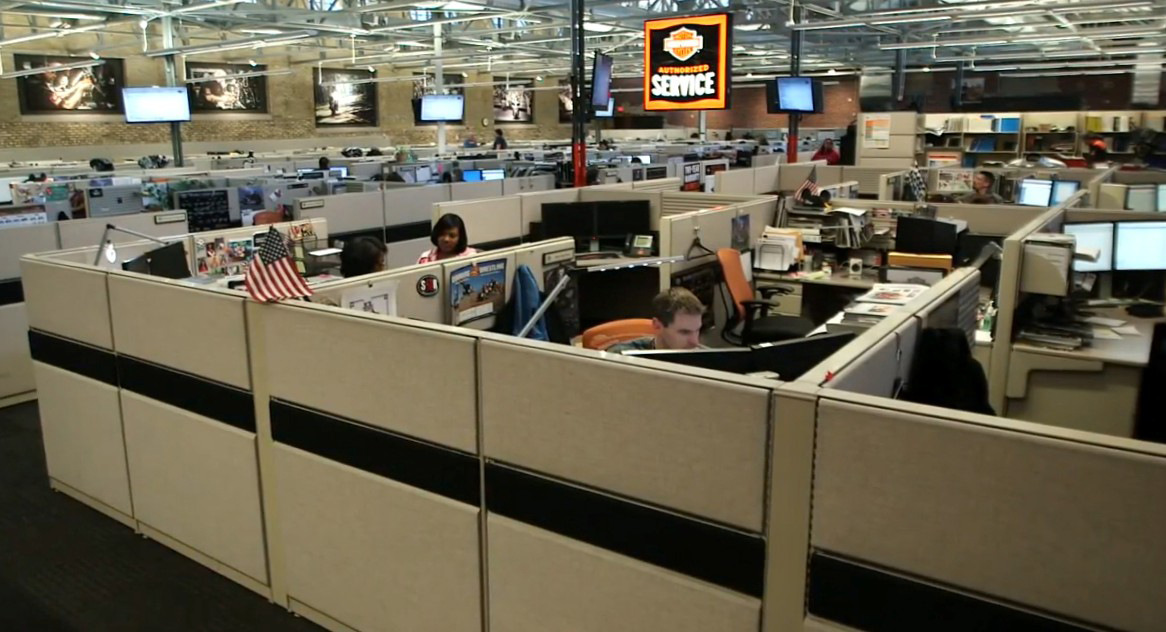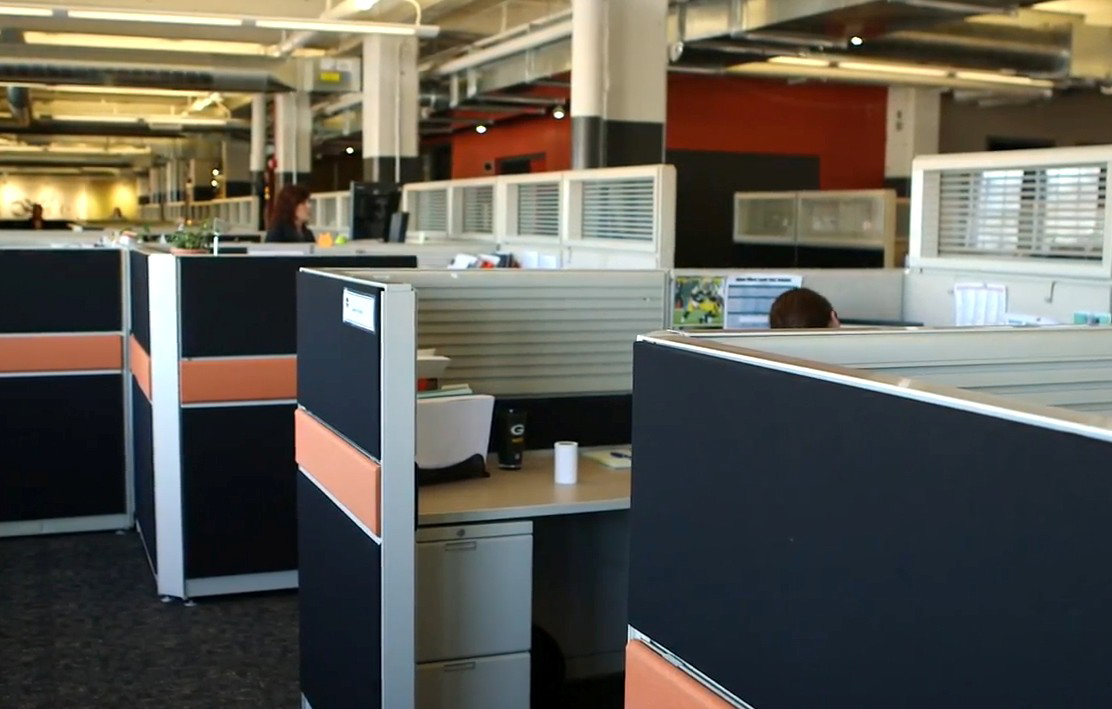The Response
In the early 1990s, the office plan at Harley-Davidson was geared to create a setting for focused, heads-down work. The emphasis was on creating defined personal workspaces that offered acoustic and visual privacy, well-defined areas where people could get work done without distraction. After vetting several manufacturers and product lines, Harley-Davidson selected Teknion’s T/O/S panel-based system, one that met the company’s criteria for flexibility and efficiency in planning—and one that would support multiple applications across the office landscape.
T/O/S has provided a very good return on investment according to Regner. "Ten years later, the work environment had changed. Now, it was all about informal communication, teamwork and collaboration and the office was morphing into an open, interactive space." T/O/S allowed Harley-Davidson to open up its workspace. The system’s modular panel design enabled the company to reverse the previous planning formula and lower panel heights from 66 to 51 inches. "We still have the same T/O/S product we had in 1990," says Regner. "The only real difference is the fabric."
The modularity of T/O/S panels also allowed Harley-Davidson to vary the aesthetic using a variety of interchangeable panel fascias or Elements in an array of finishes and styles. When the company felt it was time to refurbish the office to speak to the Harley-Davidson brand, Teknion was able to switch out neutral fabrics for a striking combination of orange and black Elements to reinforce the bold colors of the Harley-Davidson logo. Glass Elements also allow greater light transmission throughout the space. "The flexibility of T/O/S meant that we weren’t married to one palette, one color; the interchangeability of the panel Elements allowed us to say, 'Let’s go on brand here.' "
Regner adds, "We are not displacing very much. The T/O/S panels, worksurfaces, filing pedestals and so forth are being redeployed."
Teknion’s strong and enduring relationship with Harley-Davidson is a matter of great pride, as is the exceptional performance and ongoing relevance of T/O/S over more than two decades of use and reuse. "You don’t find Harley-Davidsons in a junkyard," says Regner. "And you won’t find the Teknion product in a junkyard either. Everything gets reused or recycled." Teknion’s partnership with Harley-Davidson offers evidence that initial investment in the right product ensures an excellent return on investment. The ability to change the function and look of the workplace without having to remove or replace panels and other components has also helped Harley-Davidson to realize sustainable goals, in particular its commitment to reduce waste and use of natural resources.
"We are a relationship company," adds Regner. "Relationships are part of the culture, the way our culture operates—internally, and with customers and suppliers. After nearly 25 years, with hundreds of purchase orders placed with the local dealer and with Teknion directly, not once did we scratch our heads and say, 'Maybe we didn’t make the right decision.' It’s a great testament to the Teknion brand.
CONCLUSION
T/O/S is a proven, performance-based system designed to keep pace with evolving workplace needs— offering functional and aesthetic compatibility with past and future T/O/S products, as well as other Teknion furniture lines. T/O/S significantly lowers the cost of change by allowing users to realize reduced ownership costs over the life of the product. Key product attributes include: modularity and the ability to easily reconfigure T/O/S workstations and shared workspaces, plus strength and durability, effective data/power management and product integration with other Teknion products to expand planning possibilities."

T/O/S allowed Harley-Davidson to open up its workspace. The system’s modular panel design enabled the company to reverse the previous planning formula and lower panel heights from 66 to 51 inches.

"The flexibility of T/O/S meant that we weren’t married to one palette, one color; the interchangeability of the panel Elements allowed us to say, 'Let’s go on brand here.' "